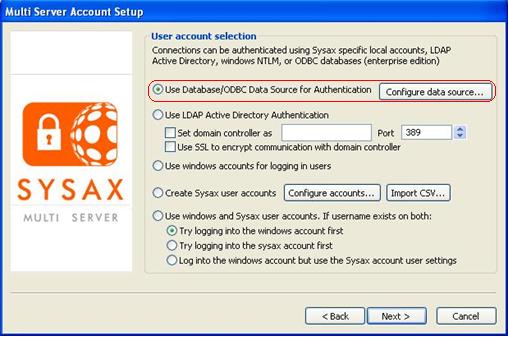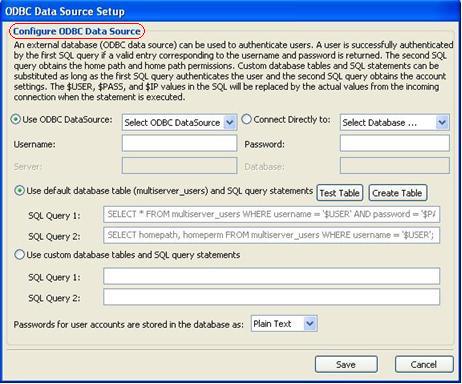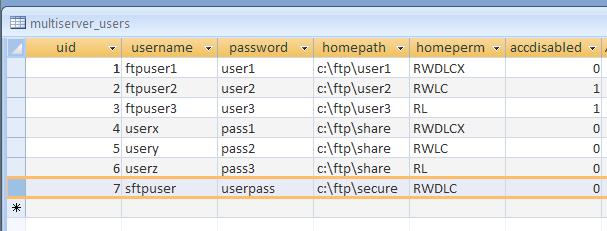
| << back to sysax.com Product page |
Sysax server can use an external ODBC Data Source to authenticate users
Clicking on the Configure data source button opens the ODBC Data Source Setup window. In this, an external database(ODBC data source) can be used to authenticate users. A user is successfully authenticated by the first SQL query if a valid entry corresponding to the username and password is returned. The second SQL query obtains the home path and home path permissions. Custom database tables and SQL statements can be substituted as long as the first SQL query authenticates the user and the second SQL query obtains the account settings. The $USER, $PASS, and $IP values in the SQL will be replaced by the actual values from the incoming connection when the statement is executed.
The MS SQL Server Driver or MS Access Driver database option can be selected to connect directly to these Microsoft databases.
An example of the ODBC tables is shown below. The SQL statement that is executed to create the tables is similar to:
CREATE TABLE multiserver_users (uid INTEGER PRIMARY KEY NOT NULL, username VARCHAR (255) UNIQUE NOT NULL, password VARCHAR (255) NULL, homepath VARCHAR (255) NULL, homeperm VARCHAR (255) NULL, accdisabled INTEGER NULL);
In this:
- The username field is the username for the account and must be unique.
- The password field is the password for the account.
- The homepath field is the home path for the account.
- The homeperm field shows the permissions for the home path and all sub folders.
For the permissions field, the following letters mean:
R = file read
W = file write
D = file delete
L = folder list
C = folder creates
X = folder delete
The accdisabled field shows if the account is disabled. An account is disabled if this field is set to 1.


